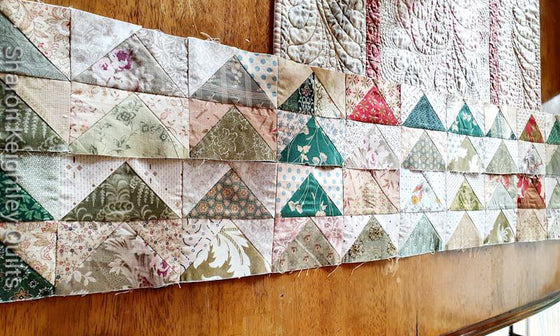Washing and Blocking your Applique Blocks
December 05, 2013

Hello Everyone
Working on class projects, has made me think how important it is to wash your applique blocks when you have finished them. Because of the products used to complete the blocks. ie: glue, starch etc, it is really important to get this all out of your blocks.
I don't always get enough time to fully explain this in class, so I have taken some pictures of my process for you. I hope this helps those of you who are not sure.
Here we go, this is how I go about washing my blocks. First I soak my block in warm water with a mild detergent. I leave it soaking for at least two hours.

I then rinse all the dirty water out of the block and when the water is clear I gently squeeze out the excess water. I place it flat, right side down on top of a towel.

I square it up with my large ruler, making sure all the seams are straight and the measurements are correct.

I pin as I go so the block stays in the correct position.

I then press with an iron, I do not move the iron from side to side. If you are not in a hurry you could leave your block to dry overnight on its own without the iron.


When the block is dry, take the pins out and flip your block over to see your finished block.

Here is a close up of the finished block to show you how invisible the stitches are even tho they have been done by machine.

Now on with the quilting, I will leave you with a shot of a feather. I love seeing the quilt and my initial idea for the design start to take shape.




I hope this has helped you, if anyone has anymore ideas on this process I would love to hear them.
This block is taken from `Lilly's Table Mat Quilt'
For more tip's on applique take a look at my E-Book ! It's jammed packed with all the information you need to make beautiful applique quilts.
Happy Stitching
Sharon
Leave a comment
















